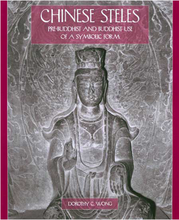Publications
2008
Designated a UNESCO World Heritage site in 1993, the Hōryūji temple complex includes some of the oldest and largest surviving wooden buildings in the world. The original Hōryūji temple was built between 601 and 607 by Prince Regent Shōtoku (573?-622), one of Japan's best-known cultural heroes. The construction of the temple marked the introduction of Buddhism and Buddhist art and architecture to Japan from China, by way of the Korean peninsula, as promoted by Prince Shōtoku. After a fire in 670 that destroyed the site, the temple was rebuilt and enlarged. Hōryūji became one of Japan's leading centers of Buddhist scholarship as well as a focus for the cult of its founder, Prince Shōtoku. This volume of essays originate from the "The Dawn of East Asian International Buddhist Art and Architecture: Hōryūji (Temple of the Exalted Law) in Its Contexts" symposium held at the University of Virginia in October 2005. Covering the disciplines of archaeology, architecture, architectural history, art history, and religion, these essays aim to shed new light on the Hōryūji complex by (1) examining new archaeological materials, (2) incorporating computer analysis of the structural system of the pagoda, and (3) including cross-cultural, interdisciplinary perspectives that reflect current research in various ways.
2007
2005
2004
Buddhist steles represent an important subset of early Chinese Buddhist art that flourished during the Northern and Southern Dynasties period (386-581). Adapted from the traditional Chinese stone tablet (bei) used for carving Buddhist images, symbols, and allegorical stories, this hybrid form epitomizes the close interactions and synthesis of indigenous Chinese and Indian Buddhist traditions on many levels: religious, social, cultural, and artistic. The phenomenon of Buddhist steles lasted only about a century (from the late fifth through the sixth century), yet this brief period yielded many works of superb artistic quality. These steles also offer important insights into the role Buddhism played in the history and culture of early medieval China and the process of adaptation and transformation by which the foreign religion was assimilated into Chinese society and became part of its civilization.
More than two hundred Chinese Buddhist steles are known to have survived. Their brilliant imagery has long captivated scholars, yet until now the Buddhist stele as a unique art form has received little scholarly attention. Dorothy Wong rectifies that insufficiency by providing in this well-illustrated volume the first comprehensive investigation of this group of Buddhist monuments. She traces the ancient roots of the Chinese stele tradition and investigates the process by which Chinese steles were adapted for Buddhist use. She arranges the known corpus of Buddhist steles into broad chronological and regional groupings and analyzes not only their form and content but also the nexus of complex issues surrounding this art form — from cultural symbolism to the interrelations between religious doctrine and artistic expression, economic production, patronage, and the synthesis of native and foreign art styles. In her analysis of Buddhism's dialogue with native traditions, Wong demonstrates how the Chinese artistic idiom planted the seeds for major achievements in figural and landscape arts in the ensuing Sui and Tang periods.
Considering the use of the upright stone by artists in many civilizations, this study of traditional Chinese bei and their Buddhist adaptations contemplates subjects that transcend the steles' own time and place, thus entering the larger discussion of the nature of symbolic forms.


